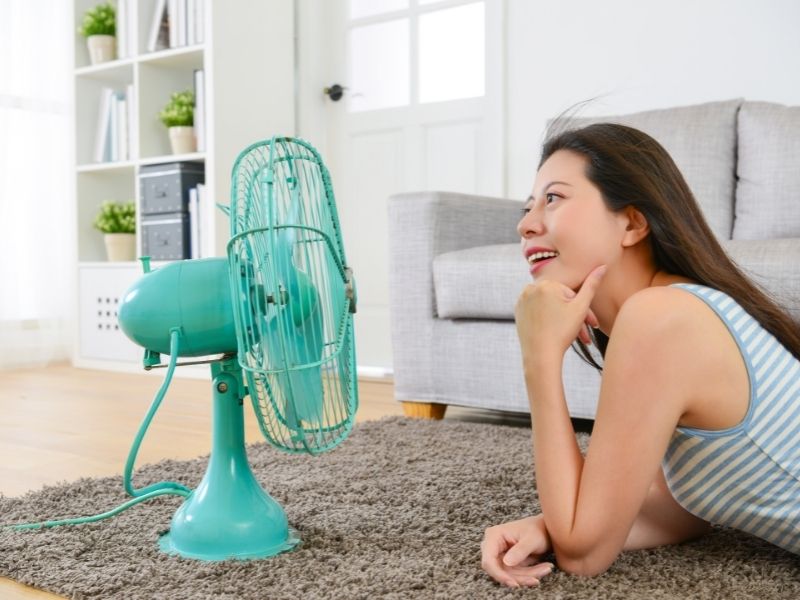Staying comfortable in your home is often a matter of climate control. However, it can be a challenge to find the ideal balance between staying cool or cozy and not breaking the bank. Home heating and cooling are some of the most significant home expenses, especially in extreme climates.
Fortunately, there are plenty of simple things you can do to keep your heating and cooling costs low. Here are some of the best cost-saving tips to manage your home’s temperature.
6 Cost-saving Tips for Your Home Heating and Cooling

1. Invest in annual tune-ups.
One of the most common mistakes homeowners make when trying to manage their energy consumption is neglecting their heating and cooling systems. In many cases, intricate systems like the HVAC, furnace, and air conditioning only get serviced when a problem arises.
According to the experts at Morris Jenkins, scheduling annual tune-up appointments can help prevent costly repairs. Additionally, ensuring these systems are running optimally will mitigate excess energy consumption, keeping heating and cooling costs lower. Schedule annual tune-ups for the air conditioning in the late winter or early spring and furnace maintenance in the latter part of the summer.
2. Find and fix drafts.
No home is airtight, especially if it’s an older building, so it’s a good idea to regularly take some time to find the drafts in your home. You’ll typically find them around windows and doors, but you may be surprised to find a draft by an outlet or exterior wall as well.
Find drafts by first turning off any fans and vents, then walk around with a candle. Alternatively, research to see if local energy providers offer an energy audit or draft detection services.
If possible, repair the issue that’s causing the draft. If not, put something in place to block the airflow by using a window sealing kit or installing a draft blocker. You can also use heavy curtains to block drafts and sunlight during the summer months to keep your home cooler without cranking up the air conditioner.
3. Use smart thermostat programming.
Programmable thermostats are a valuable tool for cutting back on home heating and cooling costs. Consider programming your temperature control to be a bit cooler at night in the winter. Dropping the temperature by a few degrees at night will not only save you hundreds each year, but studies show that cooler temperatures promote better sleep.
4. Rethink your landscaping.
One of the most innovative ways to save on heating and cooling costs is to optimize your landscaping. By incorporating strategic landscaping elements that fit your climate, you can redirect the air and create a microclimate around your home. Well-placed trees can create cooling shade during the summer while allowing warming sunlight during the winter months.
Take some time to identify your unique climate needs based on your geographical location. Then, work with a landscape architect or take a DIY approach to optimize your landscaping for better climate control. While this approach might have a high upfront cost (depending on how you go about it), it’s a great long-term investment for your forever home.
5. Mind your stove and oven use.
Try to avoid using your oven during the summer months and opt for outdoor grilling or cold plates instead. If you turn on the stove, use the range hood to help reduce humidity and promote temperature control. This strategy will help keep your home cool and won’t put as much demand on your air conditioning system.
In the winter months, use the oven to your advantage. After cooking or baking, leave the oven door open slightly to take advantage of the residual heat.
6. Use ceiling fans.
Finally, one of the simplest things you can do to cut back on heating and cooling costs is to use ceiling fans to regulate the temperature. During the warmer months, turn the fan on counter-clockwise to force air downward in a cooling manner. During the winter, turn the fan clockwise to gently draw cool air upward, forcing warm air gently toward the floor.
In conclusion.
With these simple tips, you can cut back on heating and cooling costs to keep your home comfortable without breaking the bank. If you have any questions or suggestions, we always love to hear from you in the comments below. Also below are links to more interesting articles about ALL things DESIGN for your home or business.
Images Courtesy of Canva.
Other Posts You Might Enjoy:
What Does an HVAC Mechanic Do?
What Home Sellers Need to Know about HVAC Systems





